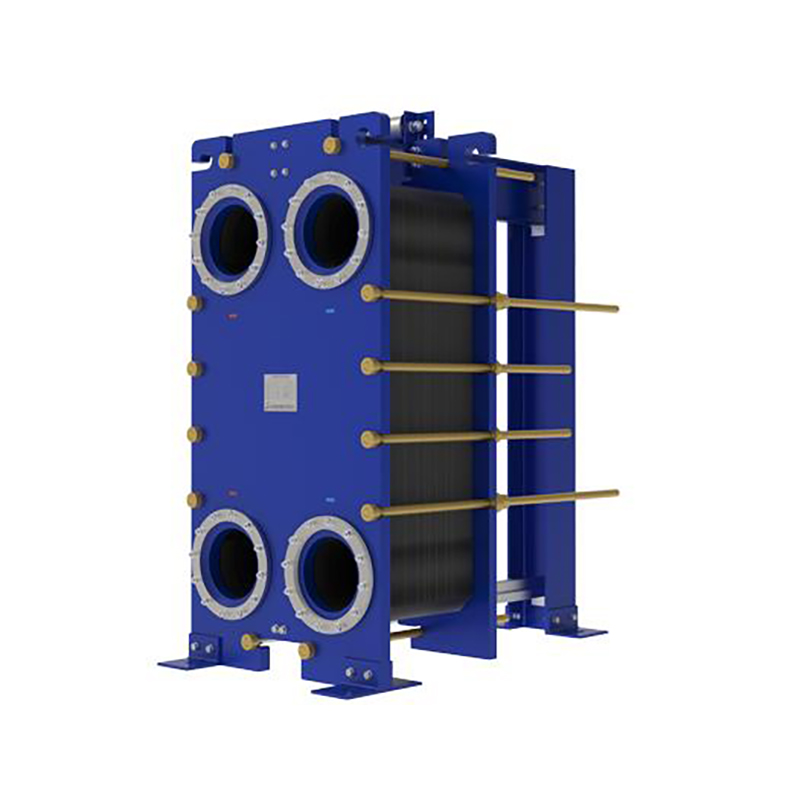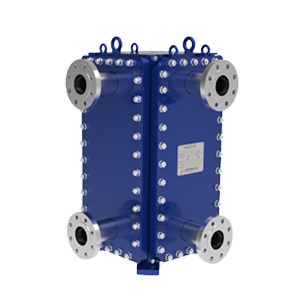5 key roles of plate heat exchanger gaskets.
Plate heat exchanger gaskets perform 5 key roles: ...
More
A Plate Heat Exchanger (PHE) is a highly efficient thermal transfer device designed to optimize heat exchange between two fluids without mixing them. It consists of multiple thin, corrugated metal plates stacked together, forming channels for fluid flow. PHEs are widely used in industries such as chemical processing, HVAC, food and beverage, and power generation due to their compact design, superior heat transfer coefficients (3-5 times higher than shell-and-tube exchangers), and modular scalability.
PHEs leverage advanced plate designs (e.g., chevron or herringbone patterns) to create turbulent flow, enhancing thermal efficiency by up to 90% while reducing energy consumption by 30-50% compared to traditional exchangers. According to market research by Grand View Research, the global plate heat exchanger market size was valued at USD 5.2 billion in 2022, with PHEs accounting for over 40% share due to their adaptability in low-to-medium pressure applications (typically below 25 bar). Key manufacturers like Alfa Laval, SWEP, and Danfoss offer PHEs with materials ranging from stainless steel (AISI 304/316) to titanium for corrosive environments. Their compact footprint (up to 80% smaller than shell-and-tube units) makes them ideal for space-constrained installations, while gasket or brazed designs cater to different temperature ranges (-40°C to 200°C).
PHEs deliver unmatched operational and economic advantages for industries prioritizing energy efficiency and total cost of ownership. Their modular construction allows for easy capacity expansion by adding or removing plates, reducing downtime during maintenance. The European Heat Exchange Network (EHEN) reports PHEs can achieve NTU (Number of Transfer Units) values of 4-6, outperforming most alternatives in duties requiring close temperature approaches (as low as 1°C).
Real-world data from chemical plants shows PHEs reduce fouling by 60-70% through optimized flow velocities (0.2-1.5 m/s), cutting cleaning frequency by half. Energy audits demonstrate 25-40% lower pumping costs due to reduced pressure drops (typically 0.3-1 bar per pass). For food processing, PHEs meet 3-A sanitary standards with CIP (Clean-in-Place) compatibility, ensuring hygiene compliance. A 2023 case study by SPX Flow revealed a dairy plant achieved 18% energy savings after replacing shell-and-tube units with PHEs. With lifecycle costs 20-30% lower than conventional exchangers and a typical ROI under 2 years, PHEs are the sustainable choice for modern industrial applications.
Select the most popular foreign trade service products to meet your diverse needs
Learn more about the dynamics and professional knowledge of the foreign trade industry

Plate heat exchanger gaskets perform 5 key roles: ...
MoreAPI 662 defines standards for plate heat exchanger...
More
You can see clear differences between welded block...
More
A gasket in heat exchanger seals surfaces, blocks ...
More
During November 16 to 18, 2020, the 38th Internati...
MoreModern HVAC heater exchangers in 2025 offer superi...
MoreSelect the most popular foreign trade service products to meet your diverse needs
Explore more content related to foreign trade services

User Comments
Service Experience Sharing from Real Customers
John Smith
Mechanical EngineerThe PHE type heat exchanger is incredibly efficient and easy to maintain. It has significantly improved our plant's thermal performance.
Emily Johnson
Process EngineerGreat product! The compact design of the PHE heat exchanger saves us a lot of space while delivering excellent heat transfer rates.
Michael Brown
HVAC TechnicianThis heat exchanger is a game-changer for our HVAC systems. It's durable, efficient, and has reduced our energy costs noticeably.
Sarah Davis
Plant ManagerThe PHE type heat exchanger has been reliable and low-maintenance. It's a solid investment for any industrial application.